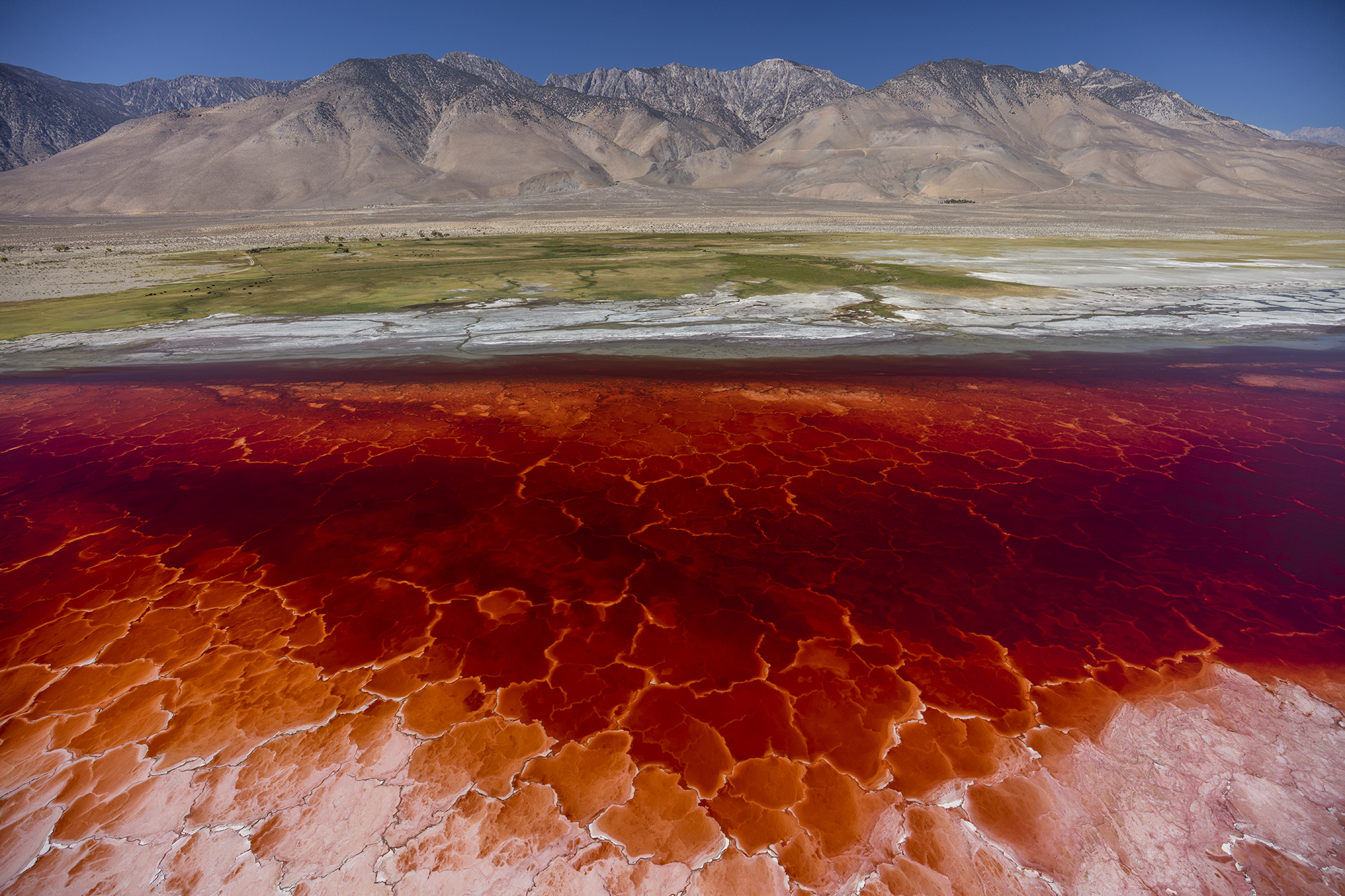Lake Natron’s water is blood red, this feature is even more prominent in places with high evaporation rates.
Lake Natron is a salt lake located in Northern Tanzania, northeast of the Ngorongoro Crater and near the Kenyan border. Nestled among volcanoes, Lake Natron is located at the lowest point of the Great Rift Valley at an altitude of 600m above sea level.
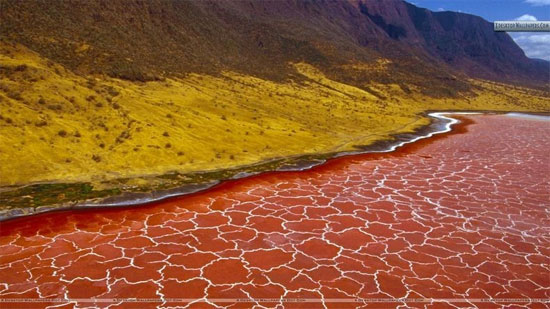
Lake Natron
The lake is fed by the Southern Ewaso Ng’iro River and mineral-rich hot springs. The lake water is quite shallow, less than 3 meters deep, and its width varies depending on the water level. Meanwhile, the water level in the lake frequently changes because the lake has a high level of evaporation, causing salts and minerals, especially sodium carbonate (natron), to concentrate on the lake bed. The area around the lake is very dry, hot and dusty, not favorable for travel.
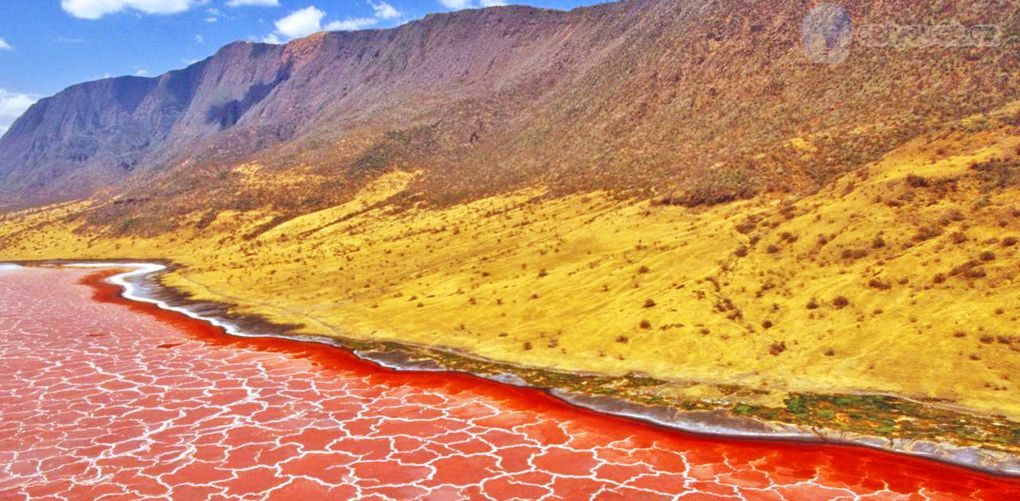
This lake is also known as the “lake of death” because for thousands of years, any animal that stumbles and falls into the lake will turn its body to stone in a short time. “The culprit” causing the above strange phenomenon at Lake Natron is a million-year-old volcano, called Ol Doinyo Lengai, located south of Lake Natron. Lava flowing down from the mountain carries special mineral salts.
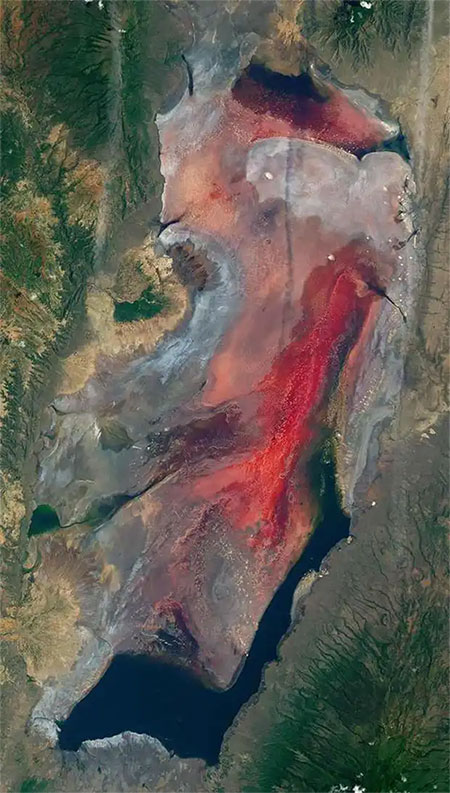
In fact, Lake Natron is a stagnant lake.
Although this colorful surface may be very seductive in the eyes of many people, it is a deadly trap for most animals. Lake Natron’s alkaline water can reach a pH level as high as 12, while conditions suitable for life are usually only at a pH level near 7.
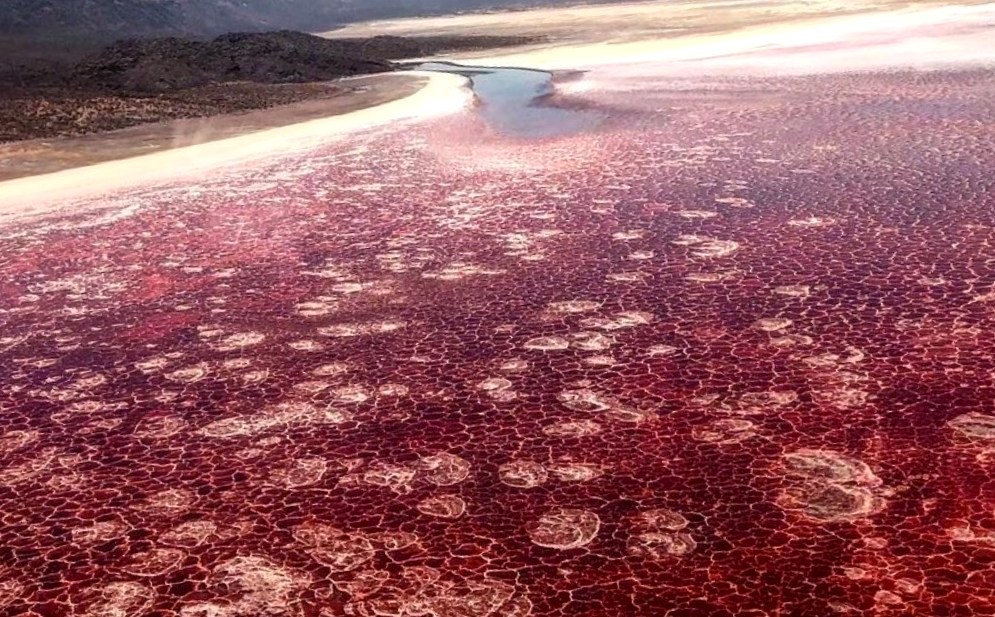
And if you bathe in this lake, the chemicals in the water will burn your skin and eyes. If an organism drinks water, it will most likely die due to severe damage at the cellular, nervous system and liver levels.
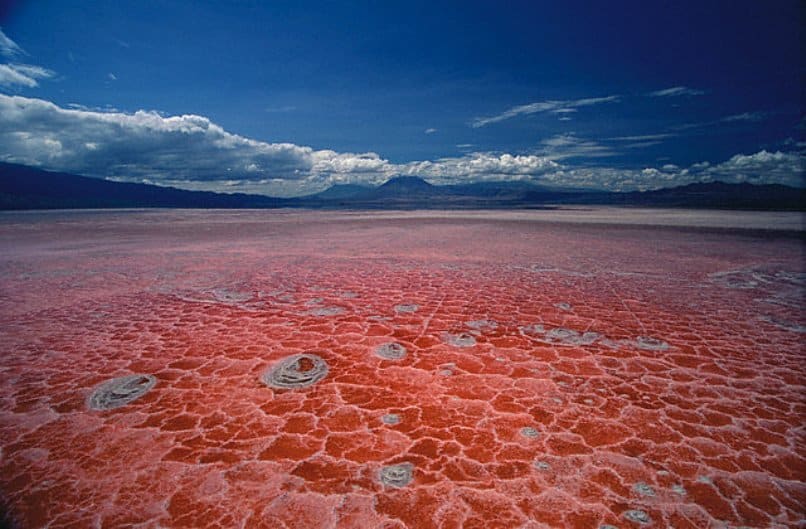
Due to the unique characteristics of the lake, dead animals in the water are calcified. It is often said that Lake Natron can turn these unfortunate animals into stone, but in reality, it is more like a mummification process.
